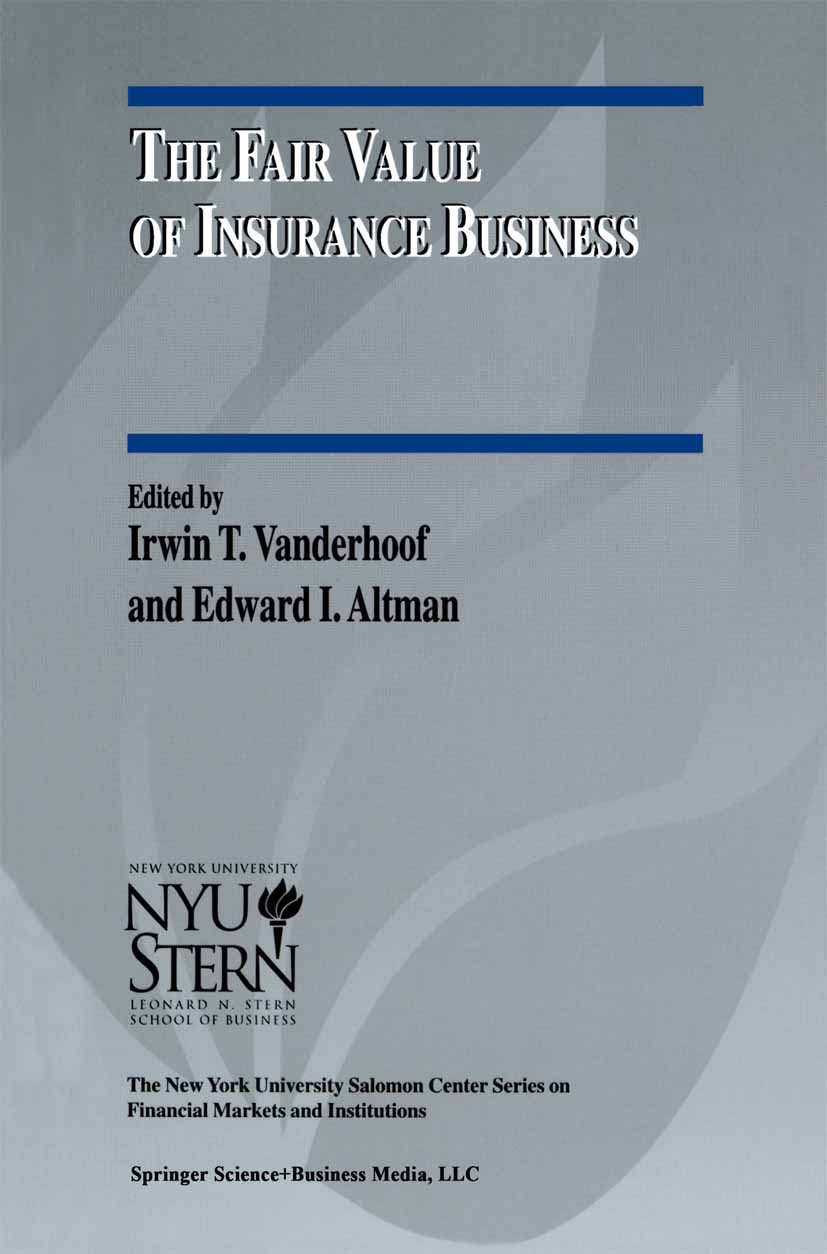| 书目名称 | The Fair Value of Insurance Business |
| 编辑 | Irwin T. Vanderhoof,Edward I. Altman |
| 视频video | http://file.papertrans.cn/910/909535/909535.mp4 |
| 丛书名称 | The New York University Salomon Center Series on Financial Markets and Institutions |
| 图书封面 |  |
| 描述 | Insurance companies, as well as banks and thrift institutions,have traditionally reported assets and liabilities on the basis oftheir amortized cost, or book value. But following the turmoil insecurities markets due to highly volatile interest rate fluctuationsin the 1980s and the early 1990s, and problems caused by inadequateliquidity, in the mid-1990s the Financial Accounting Standards Board(FASB) issued a new ruling calling for financial intermediaries toreport the fair, or market, value of most assets. Called FAS 115, thisnew standard is the first step in the eventual change to valuing allthe assets and liabilities belonging to financial intermediaries underthe fair value accounting method. Thus, these changes will posetremendous future implications for three key business measures of afinancial intermediary: . . Solvency: if the fairvalues of assets and liabilities are out-of-step, then healthycompanies may report negative net worth and insolvent companies mayappear to be in sound financial condition. .. Reported Earnings:if the fair values of assets and liabilities are out of step, thenreported earnings will not accurately represent the financialoperations of the company. .. R |
| 出版日期 | Book 2000 |
| 关键词 | Financial Accounting; Hedging; accounting; cash flow; derivatives; insurance; liquidity; management; pricing |
| 版次 | 1 |
| doi | https://doi.org/10.1007/978-1-4615-4623-8 |
| isbn_softcover | 978-1-4613-7090-1 |
| isbn_ebook | 978-1-4615-4623-8Series ISSN 1387-6899 |
| issn_series | 1387-6899 |
| copyright | Springer Science+Business Media New York 2000 |
 |Archiver|手机版|小黑屋|
派博传思国际
( 京公网安备110108008328)
GMT+8, 2025-12-27 10:02
|Archiver|手机版|小黑屋|
派博传思国际
( 京公网安备110108008328)
GMT+8, 2025-12-27 10:02


